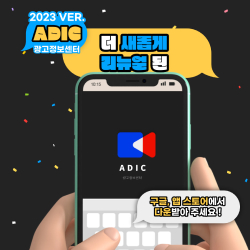소비자 의사결정 여정이 검색광고 효과에 미치는 영향 : 검색어의 구체성과 메시지 적합성을 중심으로
자료요약
본 소비자 의사결정은 한순간에 이뤄지지는 것처럼 보이지만, 역동적인 정보 탐색 과정과 다 양한 대안을 비교평가 하는 복잡한 과정의 단순한 결과이다. 심지어, 이러한 의사결정이 언제나 순차적이거나 연속적인 것도 아니다. 이러한 관점에서 소비자 의사결정을 ‘과정’이 아닌 ‘여정’으로 보는 모델이 제안되었다. 소비자 의사결정 여정은 ‘초기 고려’, ‘적극 비교’, ‘구매 결 정’ 그리고 ‘구매 후 경험’으로 이어지는데, 본 연구에서는 소비자 여정에 따라 정보검색 행동이 달라질 것으로 가정하였고, 실험1로 이를 검증하였다. 구체적으로, ‘초기 고려’ 조건의 참여자가 포괄적 검색어를 가장 높은 비율로 사용하였고, ‘구매 결정’ 조건의 참여자가 브랜드(초점 대안) 검색어를 가장 높은 비율로 사용하였다. 덧붙여, 소비자 여정에 따라 검색량도 달라진다. 정보검 색을 위해 주어진 15분 동안, ‘초기 고려’와 ‘적극 비교’ 조건의 참여자보다 ‘구매 결정’ 조건의 참여자가 더 적은 수의 검색어를 사용하였다. 다음으로, 실험2는 소비자 여정(제품 구매 예정 시 점)에 따른 광고 메시지 적합성을 검증하였다. 실험결과, 가까운 미래시점은 실행가능성을 강조 한 메시지가 바람직성을 강조한 메시지보다 효과적이었고, 먼 미래 시점은 광고 메시지에 따른 차이가 통계적으로 유의하지 않았다.
Consumer decision-making seems to be made in a moment, but it is a simple result of a dynamic information search process and a complex process of comparing and evaluating various alternatives. Even the decision-making process is not always sequential and continuous. Based on these arguments, a model has assumed that conceptualized consumer decision-making as a journey. Specifically, participants in the 'initial consideration' condition used comprehensive search keywords at the highest rate, and participants in the 'moment of purchase' condition used the brand (focused) search keywords at the highest rate. the amount of search keywords used varies according to the consumer journey. During the 15 minutes given for information search, the participants in the ‘moment of purchase’ condition used fewer search terms than the participants in the ‘initial consideration’ and ‘active evaluation’ conditions. Next, Experiment 2 verified the fit of advertising messages according to the consumer journey. As a result of the experiment, the message emphasizing feasibility was more effective than the message emphasizing desirability shortly condition, and the difference according to the advertisement message in the 'far future' condition was not statistically significant.
Consumer decision-making seems to be made in a moment, but it is a simple result of a dynamic information search process and a complex process of comparing and evaluating various alternatives. Even the decision-making process is not always sequential and continuous. Based on these arguments, a model has assumed that conceptualized consumer decision-making as a journey. Specifically, participants in the 'initial consideration' condition used comprehensive search keywords at the highest rate, and participants in the 'moment of purchase' condition used the brand (focused) search keywords at the highest rate. the amount of search keywords used varies according to the consumer journey. During the 15 minutes given for information search, the participants in the ‘moment of purchase’ condition used fewer search terms than the participants in the ‘initial consideration’ and ‘active evaluation’ conditions. Next, Experiment 2 verified the fit of advertising messages according to the consumer journey. As a result of the experiment, the message emphasizing feasibility was more effective than the message emphasizing desirability shortly condition, and the difference according to the advertisement message in the 'far future' condition was not statistically significant.
목차
1. 서론
2. 이론적 배경
1) 소비자 의사결정 여정 모델
2) 소비자 여정에 따른 검색 행동의 차이
3) 소비자 여정에 적합한 광고 메시지
3. 실험1 소비자 여정에 따른 검색 행동의 차이
1) 실험 절차 및 자극
2) 실험 결과
4. 실험2 소비자 여정과 광고 메시지의 적합성
1) 실험 절차 및 자극실험2는
2) 실험 결과
5. 논의
참고문헌
Abstract
2. 이론적 배경
1) 소비자 의사결정 여정 모델
2) 소비자 여정에 따른 검색 행동의 차이
3) 소비자 여정에 적합한 광고 메시지
3. 실험1 소비자 여정에 따른 검색 행동의 차이
1) 실험 절차 및 자극
2) 실험 결과
4. 실험2 소비자 여정과 광고 메시지의 적합성
1) 실험 절차 및 자극실험2는
2) 실험 결과
5. 논의
참고문헌
Abstract











